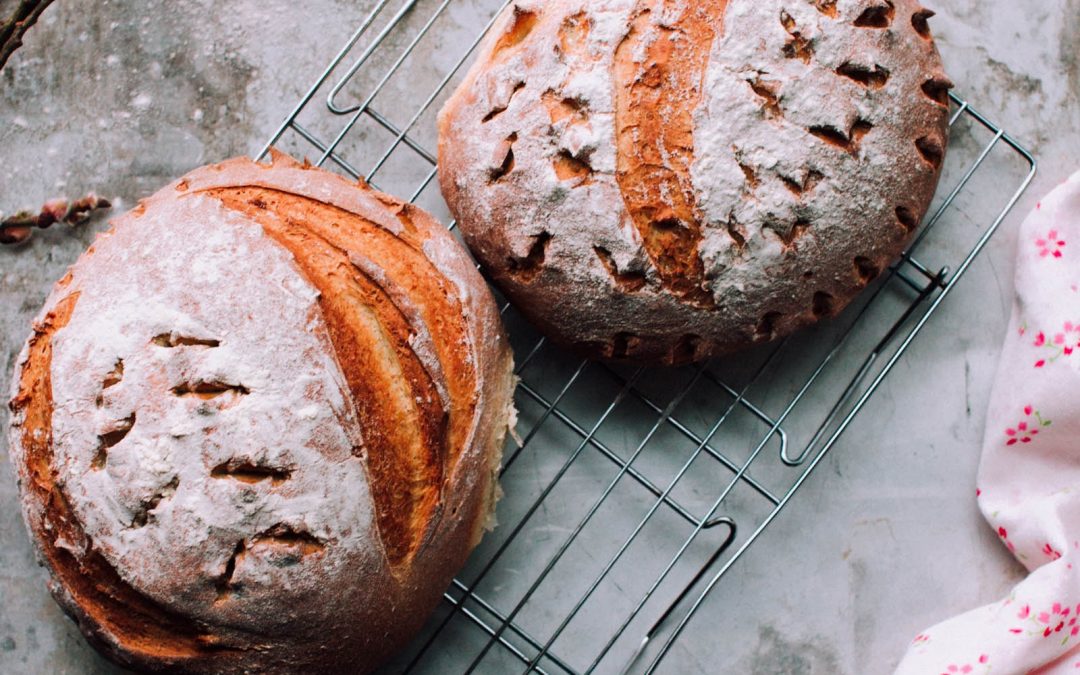So a little bird told you that gluten might be bad. Ok, maybe it was more than a little bird, maybe it was a big squawking all around – your friend, your sibling, your coworker or your favorite super star famous person. Everyone seems to be going gluten-free.
But you love bread!
You’ve eaten gluten for most of your meals for most of your life. Snacks, too.
GLUTEN = COMFORT! FAMILY! CELEBRATION! LIFE AS WE KNOW IT!
You might have heard that gluten may be associated with not only gastrointestinal issues but also with autoimmune diseases, joint pain, nutrient deficiencies, and mood disorders like depression and anxiety.
You ARE tired all of the time, your gut is a wreck, and oh, the brain fog…
A current theory about most disease and symptoms of illness is that they arise as a result of increased body inflammation – the immunologic cells themselves or the onslaught of powerful substances released when the immune system gets turned up. It’s still unclear whether the culprit is the modern-day gluten protein itself or other common exposures from crop production like glyphosate (Round-Up) or something else.
Becoming gluten free is a process and it doesn’t happen overnight. I dreaded my gluten free transition because it felt overwhelming, like I was shaking up the nutritional foundation of my entire life. But, I felt terrible and was really motivated to make a change – any change – that would shine a ray of hope for better health. I had the testing to show I was gluten-sensitive and it was time to do something about it. Before I eliminated gluten, I was taking one Rx for my terrible body-wide joint pain and another Rx for heartburn and to protect my gut lining from the negative effects of the first Rx.
I like to think about fresh, crusty, sourdough bread dripping with butter like I think about breastfeeding. I LOVED breastfeeding, my kids loved breastfeeding. I can remember what it looks like, feels like, even what it smells like. But I never need to do it again. Lucky me, I can just revisit those images in my head and get a little hit of oxytocin whenever I want.
It’s the same with gluten. I have intense taste memories of individual gluten-filled bites and shared meals throughout my lifetime and I mourn my sourdough days gone-by. However, what I have learned is that food memories are pleasant both for the content of the meal AND with whom or where you are sharing them. But the icing on my gluten-free cake is that I no longer had joint pain or heartburn! #totallyworthit
If eliminating gluten from your diet is something you want to take on, here are some tips for your transition:
- It’s easiest to start with your own kitchen, where you have the ultimate culinary control. Take inventory of your fridge and pantry. Become familiar with the many forms of gluten that can be hidden in foods/condiments.
- Replace items from #1. This is totally do-able and easier with every passing year, even at your local grocery store. If you haven’t discovered Thrive Market online, visit their website here. CAUTION: there are lots of grocery store items proclaiming “GLUTEN FREE” or “GF” but that doesn’t automatically equate to HEALTHY. A gluten free cookie is still a cookie. Choose wisely. Consuming various forms of “cooked white paste” doesn’t benefit anyone, gluten free or not. Start with non-negotiables like bread, tortillas, pasta, crackers and whatever else from the grain/carb family that you can’t live without. Sprouted nut-based crackers or a butter-lettuce-leaf wrapped around that burger instead of a bun are simple, tasty alternatives to the GF white-paste versions.
- Once you’ve used your kitchen as your “training ground,” venture a bit farther and visit your favorite restaurant. First, ask your server about a gluten-free menu. If they don’t have one, scan the menu for GF-friendly items. Accommodations for “restricted” diets are becoming more common and I rarely feel like the weirdo/picky/overly-conscious healthy eater that I used to apologize for being. At this stage, you can go ahead and order like you were already gluten free, or eat whatever you want while making a mental list of what the Future GF You could eat. IMPORTANT TIP: your choice of words matters! This is subtle but it was really meaningful to me: Instead of saying apologetically, “Sorry, I can’t eat gluten” I now say, “Thanks, that looks great but I don’t eat gluten.” Can’timplies deprivation and loss while don’tsuggests a CHOICE in the matter – which feels more positive you AND to anyone else listening. If others are interested, tell them why you have chosen your nutritional path and share your amazing health gains.
- Speak your dietary intentions out loud and enlist the help and support of your loved ones. They might want to join you or may even be dabbling in gluten freedom already. When you verbalize your plans, you voice your commitment to your health and well-being.
You can do this and I can help you!



